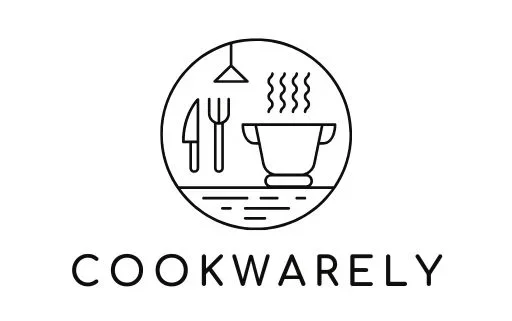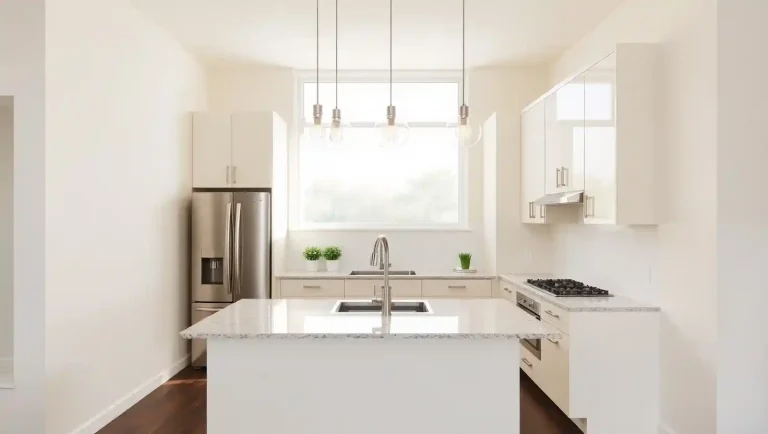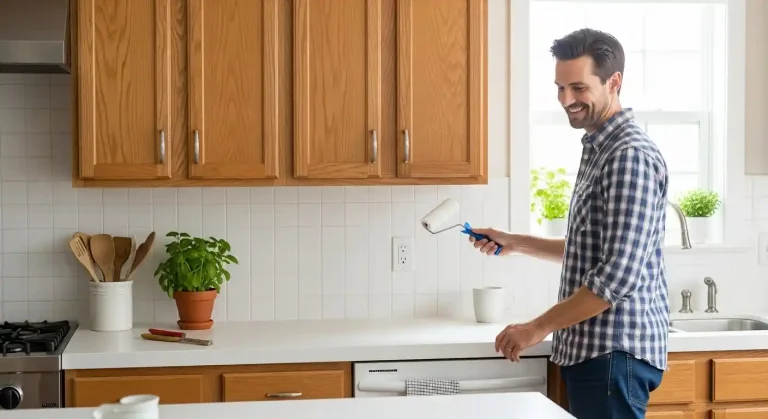Are Kitchen Cabinets Considered Furniture? A Complete Guide
Kitchen cabinets are considered built-in fixtures rather than standalone furniture, as they are permanently installed and serve as integral storage and functional components of a kitchen.
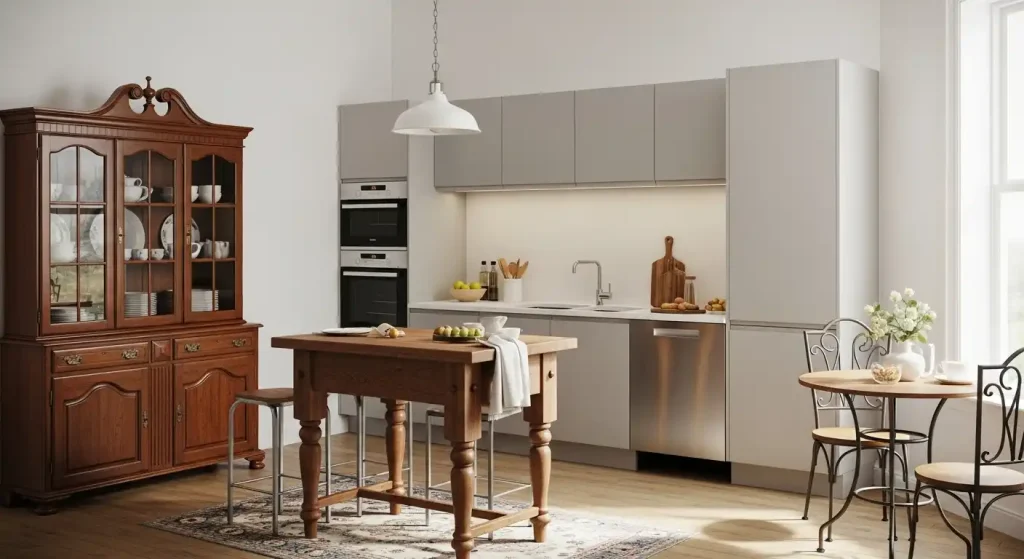
When designing or remodeling a kitchen, one question often sparks debate: are kitchen cabinets considered furniture?
The answer isn’t as straightforward as you might think. It depends on how you define “furniture,” the type of cabinets you have, and the context—legal, design, or functional.
In this guide, we’ll break down the definitions, explore the differences between furniture and fixtures, and explain how kitchen cabinets fit into both categories.
We’ll also share design tips and related resources to help you make the most of your cabinetry.
Understanding the Definition of Furniture
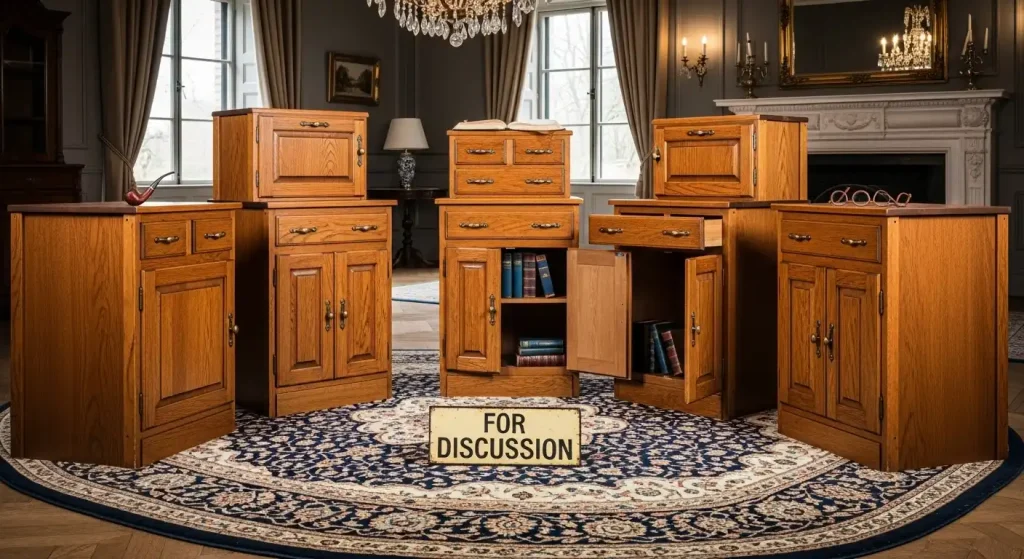
Traditionally, furniture refers to movable items that make a space functional—tables, chairs, dressers, and sofas.
The key word here is movable. Furniture can be relocated without altering the structure of a building.
By that definition, most kitchen cabinets—especially built-in types—don’t fit neatly into the “furniture” category, because they are fixed to walls or floors.
Kitchen Cabinets as Built-In Furniture
While they may not be “movable” in the classic sense, kitchen cabinets are often considered a form of built-in furniture.
They serve the same purpose as furniture: storage, organization, and aesthetic enhancement.
The difference is that they are permanently attached to the kitchen layout.
This built-in nature makes them essential to the kitchen’s design. They’re not just functional—they’re a major style statement.
For example, choosing two-tone kitchen cabinets can transform a space into something modern and dynamic (see design ideas here).
Cabinets as Fixtures
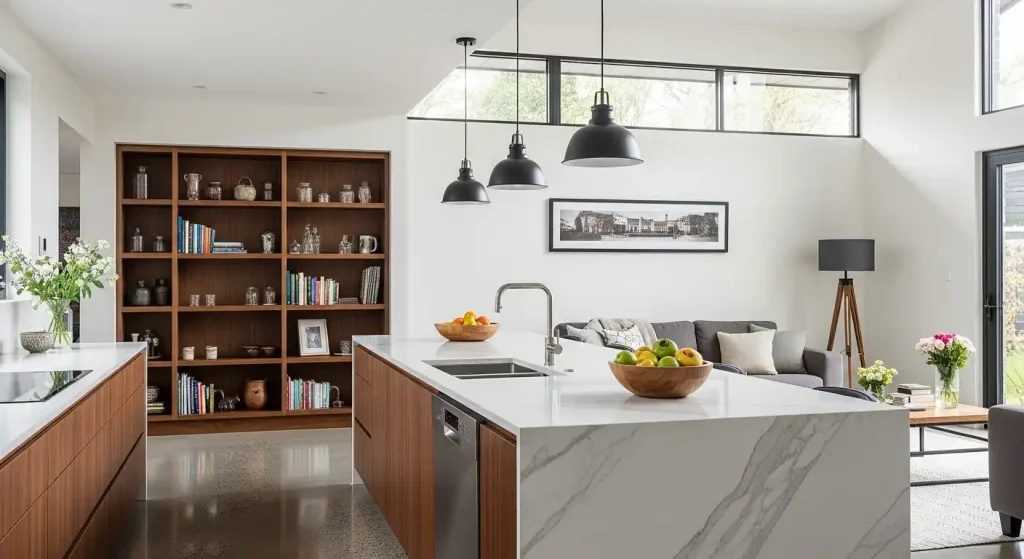
In legal and real estate terms, kitchen cabinets are usually classified as fixtures.
A fixture is something that’s attached to the property and intended to stay when it’s sold.
Removing cabinets would damage the walls or floors, so they’re considered part of the home.
This distinction matters for property sales, insurance, and even rental agreements.
If you sell your home, your cabinets typically stay—unlike a freestanding hutch or storage unit.
Freestanding vs. Built-In Cabinets
Not all cabinets are created equal.
Freestanding cabinets—like portable kitchen islands or antique hutches—are definitely furniture.
They can be moved, sold, or replaced without construction work.
Built-in cabinets, on the other hand, are installed as part of the kitchen’s structure.
They’re custom-fitted to the space and often designed to match countertops, backsplashes, and appliances.
If you’re wondering how to style cabinets with appliances, our guide on kitchen cabinet color ideas with black appliances has great tips.
Why the Classification Matters
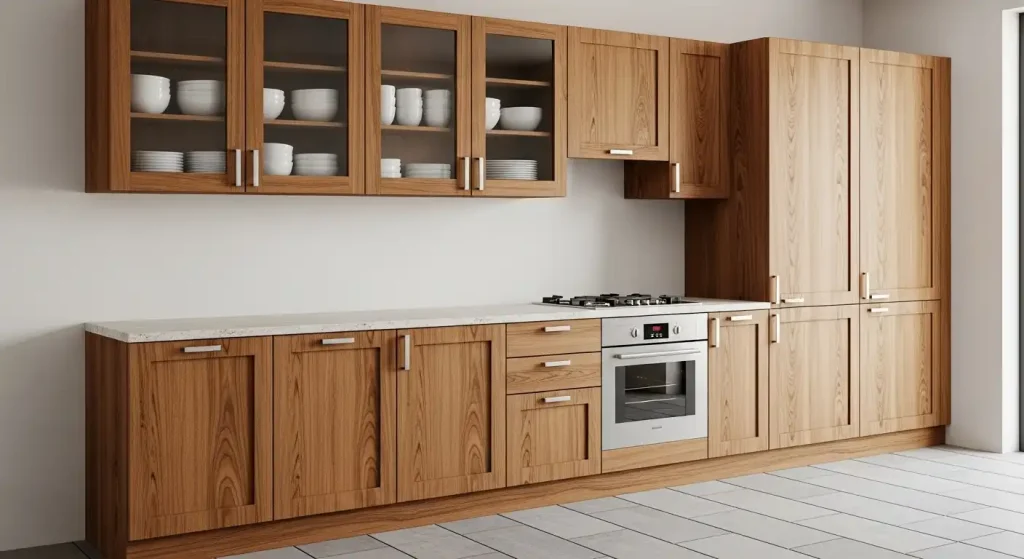
You might think this is just a semantic debate, but knowing whether cabinets are furniture or fixtures can impact:
- Resale value – Built-in cabinets increase a home’s value.
- Tax and insurance – Fixtures are part of the property; furniture is personal property.
- Design choices – Built-ins require more planning because they’re permanent.
Design Implications of Built-In Cabinets
Because built-in cabinets are permanent, their design has a long-term impact on your kitchen’s look and feel.
That’s why choosing the right color, material, and layout is so important.
Whether you’re working with brown floors (see matching cabinet ideas) or a blue kitchen island (pairing tips here), your cabinet choices should complement the rest of the room.
Materials and Styles
Kitchen cabinets come in a variety of materials, each with its own pros and cons:
- Solid wood – Classic and durable, works well with oak cabinet color ideas.
- MDF or particleboard – Affordable but less durable.
- Metal – Sleek and modern, often used in industrial kitchens.
- Glass-front cabinets – Great for display; see glass cabinet display ideas.
Your choice of material can influence whether the cabinet feels more like furniture or a functional fixture.
Custom vs. Stock Cabinets
Custom cabinets are built to fit your kitchen exactly, often blending seamlessly into the walls and ceiling.
Stock cabinets are pre-made and may have a more “furniture-like” appearance, especially if they’re not fully built in.
If you’re considering extending cabinets to the ceiling, our guide on should you extend kitchen cabinets to the ceiling can help you decide.
Styling Cabinets Like Furniture
Even if your cabinets are technically fixtures, you can style them to feel more like furniture.
Some ideas include:
- Adding decorative legs or feet to base cabinets.
- Using contrasting colors for upper and lower cabinets (see two-tone brown and white examples).
- Incorporating open shelving for a lighter, more “furniture-like” look.
Cabinet Colors and Trends
Cabinet color plays a huge role in whether they feel like part of the structure or a standalone design element.
For example:
- Dark blue cabinets can create a bold, statement-making look (see dark blue ideas).
- Taupe cabinets add warmth and elegance (style tips here).
- White cabinets feel timeless and versatile (color pairing guide).
The Role of Backsplashes
A backsplash can help integrate cabinets into the overall kitchen design or make them stand out.
For example, pairing white cabinets with a striking backsplash (ideas here) can create a crisp, modern look.
For darker cabinets, see our backsplash designs with dark cabinets for inspiration.
Storage and Organization
Built-in cabinets are often more efficient for storage than freestanding furniture.
You can customize them with pull-out drawers, lazy Susans, and vertical dividers to maximize space.
For small kitchens, our guide on how to organize kitchen cabinets in a small kitchen offers practical tips.
Above-Cabinet Space
If your cabinets don’t reach the ceiling, the space above can be used decoratively—similar to how you’d style a furniture piece.
You can display baskets, plants, or seasonal decor. For inspiration, see our above kitchen cabinet decor ideas.
Matching Cabinets to Other Elements
Cabinets should coordinate with countertops, flooring, and even fixtures like faucets.
If you’re unsure, our guide on should the kitchen faucet match the cabinet can help you make cohesive choices.
When Cabinets Feel Like Furniture
There are situations where kitchen cabinets truly feel like furniture:
- Freestanding pantry units – Moveable and decorative.
- Vintage hutches – Often used in farmhouse kitchens.
- Portable kitchen islands – Functional and flexible.
These pieces can be swapped out over time, much like a dining table or sideboard.
Final Verdict: Furniture or Fixture?
So, are kitchen cabinets considered furniture?
In most cases, built-in cabinets are classified as fixtures because they’re permanently attached to the home.
However, freestanding cabinets and islands are indeed furniture.
From a design perspective, cabinets—whether fixed or movable—serve the same purpose: they provide storage, define style, and make a kitchen functional.
Final Tips for Cabinet Design
- Choose durable materials that suit your lifestyle.
- Coordinate colors with flooring and appliances for a cohesive look.
- Think about long-term functionality, especially for built-ins.
- Add personal touches to make them feel warm and inviting.
Whether you see them as furniture or fixtures, your kitchen cabinets are one of the most important elements in your home.
They’re worth the investment in both quality and style.
